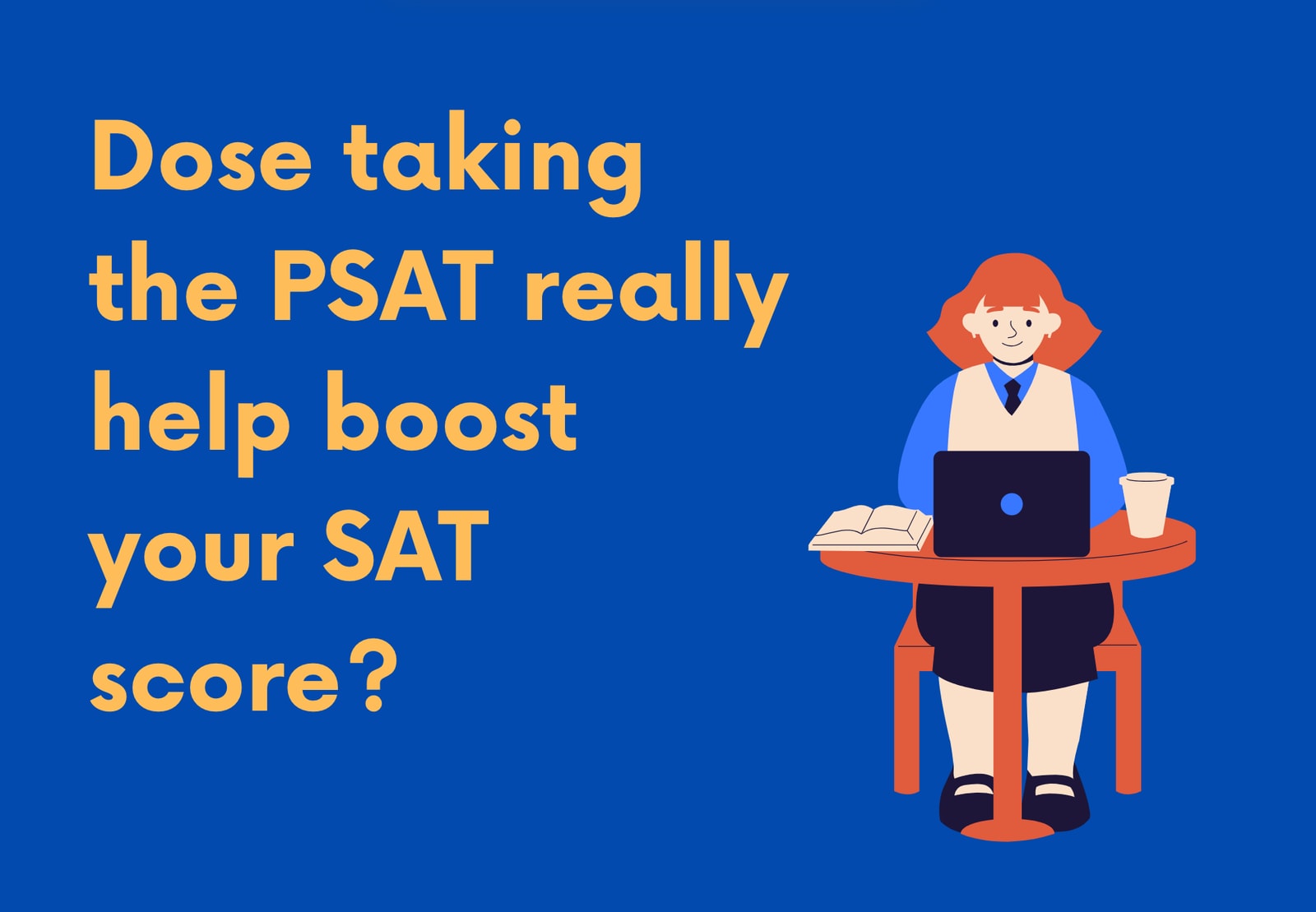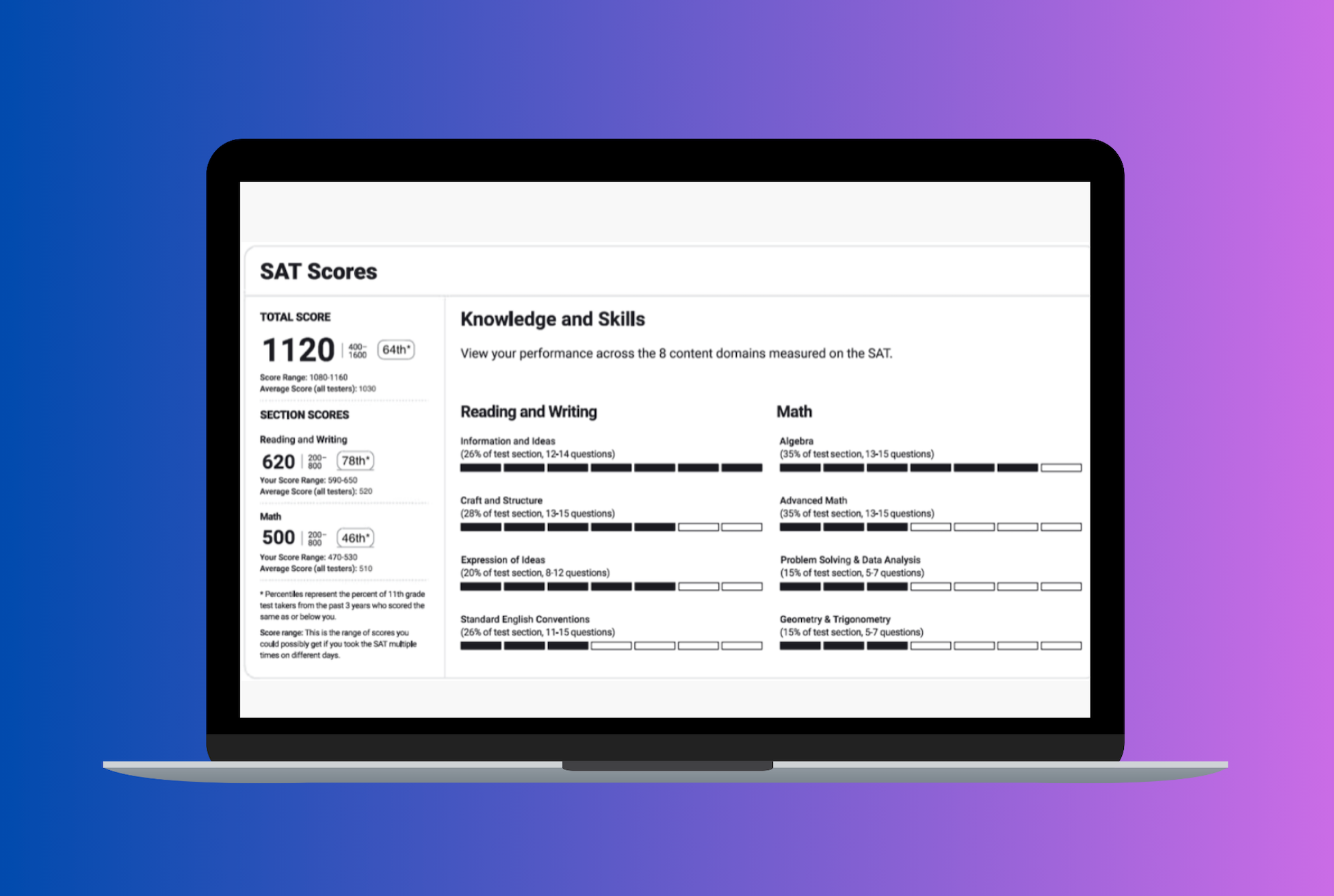PSAT vs. SAT: Smart SAT Prep Strategies to Boost Your Score
Author
Phoenix Wilder
Date Published

For high school students aiming to attend U.S. colleges, two widely recognized tests—PSAT and SAT—frequently come up in conversations about college preparation. Despite their similar names, these tests serve distinct purposes, and understanding the differences between the two is essential to developing effective SAT prep strategies. This article will break down the distinctions between PSAT and SAT while also providing actionable advice to integrate them into your preparation plan.
What is the PSAT?
The Preliminary SAT (PSAT), as its full name suggests, is a preparatory version of the SAT. Administered by the College Board, the PSAT serves as both a practice test for the SAT and a diagnostic tool for assessing students' academic strengths and identifying areas for improvement.
Key Characteristics of the PSAT:
1. Purpose: Familiarize students with the SAT's structure, content, and question formats in a low-stakes environment.
2. Evaluation: Provide score reports that highlight areas of strength and weakness, guiding students in refining their test prep strategies.
The PSAT is offered in three versions, each tailored for students at different grade levels:
- PSAT 8/9: Designed for 8th and 9th graders; shorter and less challenging than the SAT, with a score range from 320 to 1520.
- PSAT 10: Geared toward 10th graders; aligned more closely to the SAT, with a score range from 320 to 1520.
- PSAT/NMSQT (National Merit Scholarship Qualifying Test): Primarily taken by 11th graders; identical to the PSAT 10 in content but serves as the qualifying test for the National Merit Scholarship, making it more significant for students seeking merit-based awards.
While the PSAT is not used for college admissions, it plays a critical role in preparing students for the SAT by offering a realistic testing experience and valuable performance feedback.
What is the SAT?
The SAT, administered by the College Board, is a globally recognized standardized test designed to assess the knowledge and skills students develop during high school, focusing on college and career readiness.
Key Features of the SAT:
1. Components: The test consists of three sections—Reading, Writing and Language, and Math—evaluating a student’s comprehension, analytical reasoning, and problem-solving abilities.
2. Scoring System: The SAT is scored on a scale of 400 to 1600, with 800 points each for the Evidence-Based Reading and Writing section and the Math section.
3. Format: As of 2024, the SAT transitioned to a fully digital format worldwide, including in the United States. The digital exam is administered on personal devices, such as laptops or tablets, provided by the students themselves.
Key Differences Between PSAT and SAT
While the PSAT serves as a stepping stone for success on the SAT, several critical differences distinguish these two tests. Recognizing these distinctions can help students set clear goals and craft a focused SAT preparation plan.
1. Exam Difficulty: The PSAT is intentionally designed to be less challenging than the SAT. Specifically:
- PSAT 8/9: Simplified questions and a shorter duration, tailored to younger students who are just beginning their test prep journey.
- PSAT 10 and PSAT/NMSQT: Closer to the SAT in content and difficulty but still slightly easier.
In contrast, the SAT includes more advanced questions and a longer format, reflecting the expectations of college admissions. Hence, while success on the PSAT can boost students’ confidence, it’s essential to adjust preparation strategies to tackle the increased difficulty of the SAT.
2. Purpose: The primary objective of the PSAT is to serve as a practice tool that allows students to identify their strengths and weaknesses. Additionally, for 11th graders taking the PSAT/NMSQT, the scores determine eligibility for the National Merit Scholarship, adding an incentive for top performers.
On the other hand, the SAT is a high-stakes assessment used by colleges to evaluate academic readiness and as part of the admissions process. More than just a practice exercise, it directly impacts a student’s college prospects and financial aid opportunities.
3. Test Frequency: The PSAT test frequency depends on the specific version:
- PSAT/NMSQT (National Merit Scholarship Qualifying Test) is typically administered once a year in the fall, usually in October. This version is most commonly taken by 11th graders.
- PSAT 10, designed for 10th graders, is generally offered in the spring.
It’s important to note that actual test dates and offerings may vary depending on each school’s administration schedule. Students are encouraged to consult their school to confirm the availability and timing of the PSAT.
In comparison, the SAT is available on multiple test dates throughout the year, typically in August, October, November, December, March, May, and June, giving students the flexibility to choose when to test based on their preparation and application timelines.
4. Score Utilization: PSAT scores are used only by students and their schools for diagnostic purposes, while SAT scores play a pivotal role in the college admissions process. Colleges rely on SAT scores to:
- Assess students’ academic potential.
- Compare applicants on a standardized scale.
- Determine eligibility for scholarships and honors programs.
Despite this, PSAT scores remain valuable for shaping an effective SAT prep plan, offering insights into areas requiring focused improvement for maximum gains on the SAT.
Why Taking the PSAT Matters
Although PSAT scores do not directly impact college admissions, participating in the PSAT offers several advantages worth considering:
1. A Realistic SAT Practice Opportunity: The PSAT provides a full-length testing experience that mirrors the SAT without the pressure associated with college admissions. By taking the PSAT, students can become familiar with:
- Test format and pacing strategies.
- Types of questions commonly found on the SAT.
2. Detailed Academic Feedback: The PSAT comes with a comprehensive score report that highlights:
- Performance in individual subject areas like Reading, Writing, and Math.
- Areas where students excel and those requiring improvement.
This data allows for targeted practice, ensuring that students spend their preparation time efficiently.
3. Building Confidence: By consistently taking the PSAT from 8th through 10th grade, students can track their progress over time, building both skills and confidence as they prepare for the SAT. Familiarity with the exam process helps reduce test anxiety when it’s time to take the SAT.
4. National Merit Scholarship Opportunities: The PSAT/NMSQT opens doors for high-achieving students to qualify for the prestigious National Merit Scholarship Program, which can lead to recognition, financial awards, and enhanced college application profiles.
Actionable SAT Prep Strategies
Whether you’re just starting your journey with the PSAT or preparing to ace the SAT, here are some proven prep strategies to maximize your performance:
1. Start Early: Take the PSAT starting in 8th or 9th grade to establish a baseline for your academic strengths and weaknesses.
2. Leverage PSAT Feedback: Use PSAT score reports to identify areas needing improvement and tailor your study plan accordingly.
3. Practice Consistently: Incorporate SAT practice tests into your routine to improve test-taking stamina and adjust to the pacing of the SAT.
4. Focus on Weak Areas: Dedicate extra time to topics or question types that regularly challenge you on the PSAT and SAT practice tests.
5. Use Official Resources: Take advantage of free, official SAT prep materials from College Board and Khan Academy, which offer personalized study plans based on your performance.
6. Set Test Day Goals: Aim to achieve a score incrementally higher than your last performance. Use the PSAT as a stepping stone to sharpen your skills ahead of the SAT.
7. Retake Strategically: Remember that the SAT can be retaken multiple times. Use each attempt as an opportunity to surpass your previous score and showcase your growth to colleges.
Conclusion
The PSAT and SAT may share similarities, but their roles in your academic journey are distinct. While the PSAT emphasizes practice and self-assessment, the SAT determines college admissions outcomes. By taking a strategic approach—leveraging the PSAT for growth and refining your SAT prep techniques—you can build confidence, identify strengths, and achieve a score that reflects your true potential. Start early, persevere, and remember—the right preparation can make all the difference in your path to college success!
Related Posts

Learn how the digital SAT score report simplifies performance metrics, offers visual tools, and helps you focus your prep for top scores.

Learn how to decide between the SAT and ACT by understanding their formats, scoring, and which aligns with your strengths.